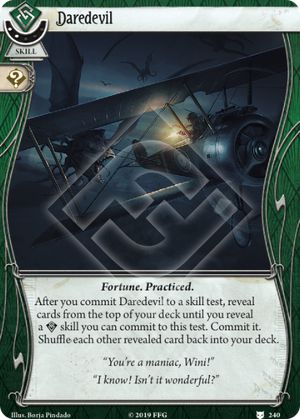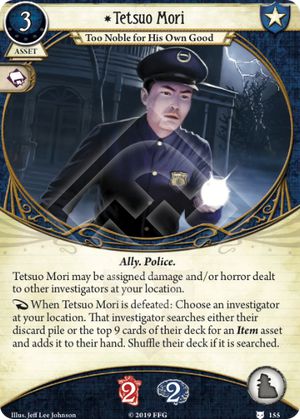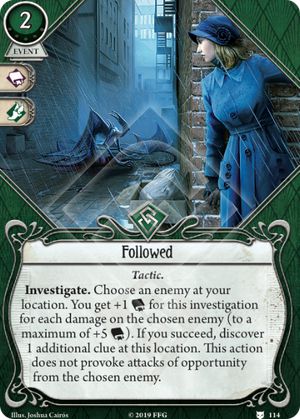
What do you do when you dont now if a card is any good? You flee in numbers.
First the obvious:
- Daredevil gives costs 2xp
- Gives a
- After the commitment, you can reveal another skill to commit to the
Of course the -token isnt good for 2xp, so the main-part is the other skill card, but what other skills are there? The fact is that -skills dont have so awesome icons (apart from Cunning), so I would consider to take a skill for its special effect. These skills are:
All of these Skills only give you 1-2 skill points, so there special abillity is there plus, wich means the effect of Daredevil is mesaured by the effect of this skill card. The last thing to talk about now is Cunning. If you have enough resources, this card gives 3/, in this case Daredevil could replace Cunning, if you have enough resources but not the card itself.
Fazit
I dont think this card is very good, because it really needs a good other skill to be of use. I only would use it if I have a Double or Nothing & Quick Thinking combo running, in this case the card is very good. The problem I see here is the wrong faction, all other faction (Mystic excluded) have cards that offer 3 and does not have this kind of cards. Most of the 30 card decks have enough chance to have the right cards at the right time, but if you want these cards with a higher chance to the right time in your hand, it is also considerebale, but then you need a high skill card procentage.



